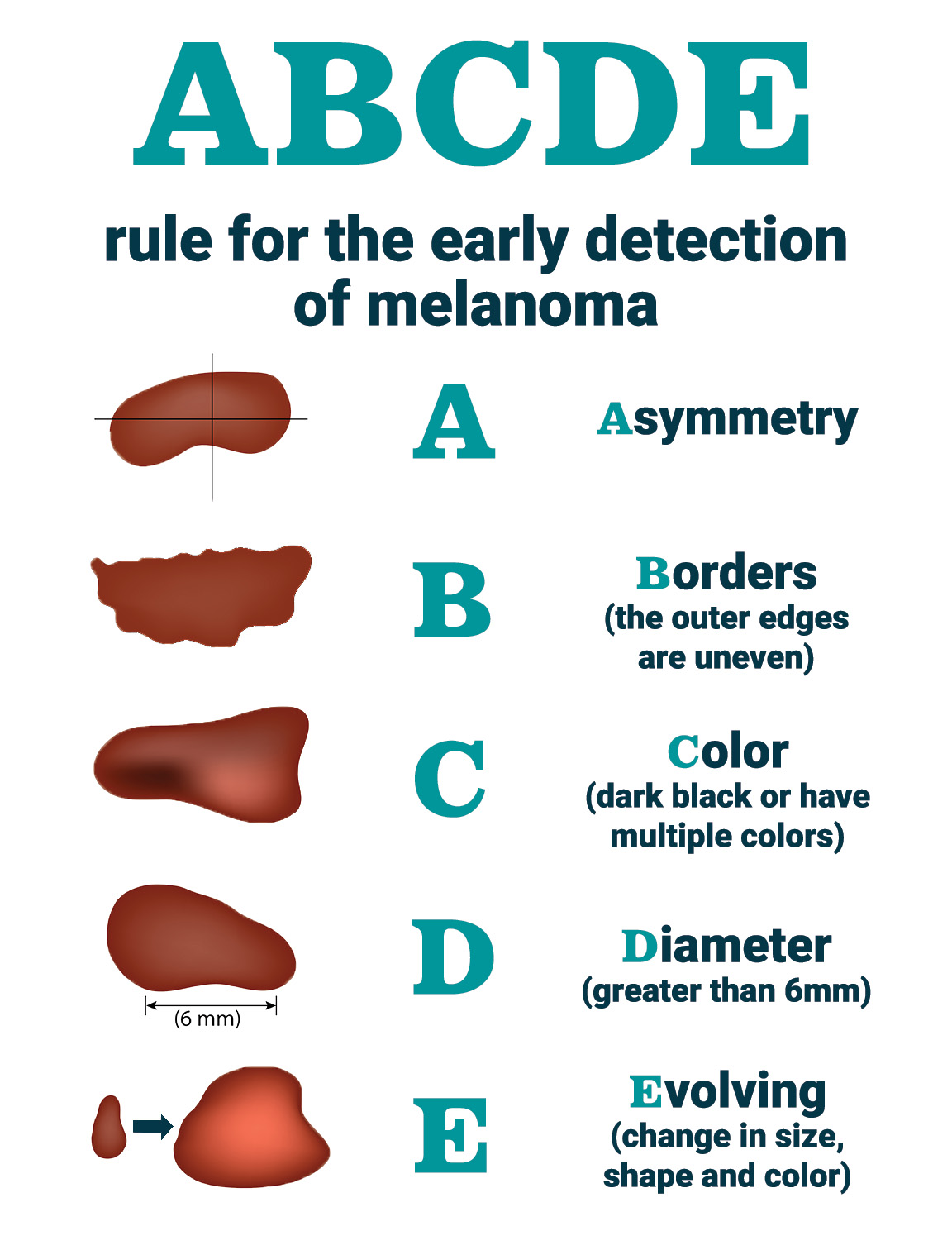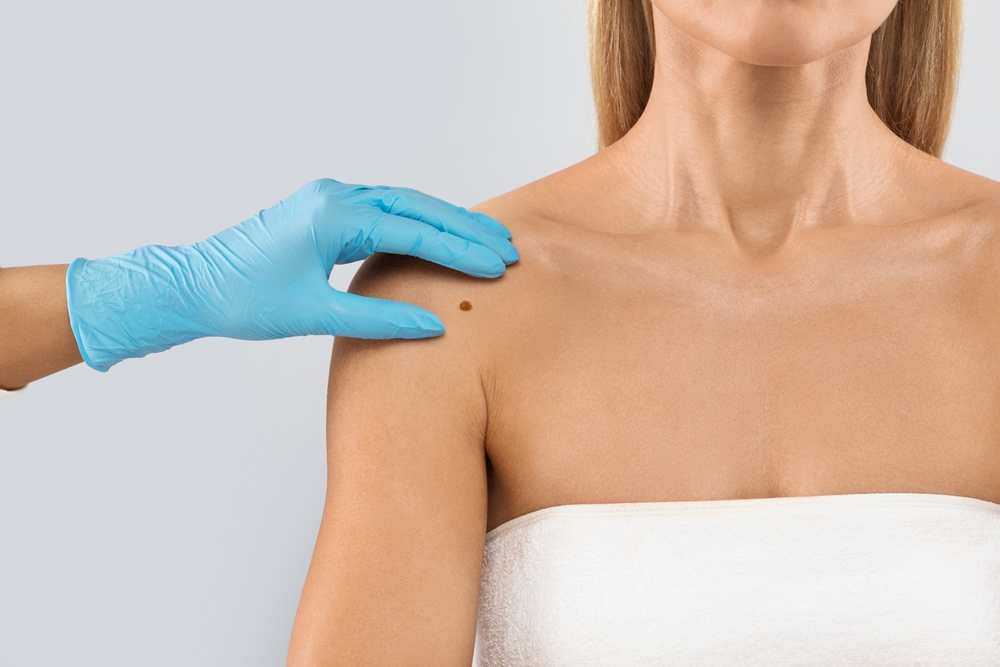Moles are common in many people, and most are harmless. They typically emerge in childhood and teenage years and can change in size and color as you grow older. Most moles develop when cells, which produce pigment, grow in groups. They can appear as small, round, or oval, and as dark or flesh-colored bumps on your skin. Nearly all moles are around 1/4 inch in diameter and considered benign.
As you age, you may start to notice the appearance of new “spots” on your skin – one of which could be a mole, freckle, sunspot, or age spot. Other than being pesky, freckles, sunspots and age spots are generally innocuous. However, if you do notice the presence of a new mole in adulthood, it could potentially mean trouble. As new moles or growths appear, you should conduct a skin self-exam right away by following the ABCDEs of melanoma, and subsequently schedule an appointment with a dermatologist to make sure your mole isn’t cancerous.
To detect melanomas, follow the ABCDE rule and look for growths that are:
- Asymmetrical in size
- Borders are irregular or jagged
- Color is not the same all over, and includes areas of blue, brown, black, or red
- Diameter is larger than the size of a pencil eraser (6 mm)
- Evolving in size, shape, or color
- Melanoma is the most dangerous and aggressive form of skin cancer. Left untreated, it can spread quickly and become fatal.
- Early detection and treatment of melanoma saves lives and minimizes risks for complications.
Florida Dermatology & Skin Cancer Centers offers annual skin cancer screenings as well as effective surgical and non-surgical skin cancer treatments. Call us today to learn more.
Precancerous Lesions
Early identification and diagnosis of precancerous lesions increases the likelihood that treatment will be successful. To make a diagnosis, your dermatologist will perform a skin examination, and determine next steps. Depending on the size, location and severity of the lesion, several treatment options are available to remove cancerous cells, including Mohs micrographic surgery, the most effective technique for most types of skin cancers, with minimal scarring or risk.
It’s important to remember that excessive sun exposure can lead to an increased risk of developing skin cancer such as melanoma. To help protect yourself from a diagnosis, you should wear water-resistant and broad-spectrum sunscreen with an SPF of 30 or higher daily, wear protective clothing, avoid tanning beds, and try to seek shade during the hours of 10 a.m. and 2 p.m., since the sun’s UV rays are strongest during that time frame.
If you’re an adult, and you notice a new mole or growth of any kind, it’s imperative to have it checked by your dermatologist as soon as possible.


